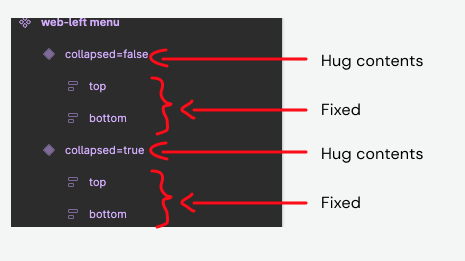I noticed a bug that has recently appeared sometime in the past two weeks dealing with autolayout and nested components.
Our team uses master components so that we can push style changes to all variants quickly. It works great and helps keep things tidy. The only issue with this is that if you want a full-width component (for instance, a button you want to expand to the size of the mobile screen), you would normally have to take these steps:
- Drag a variant instance onto the frame
- Double click to go from the variant to the master button frame
- Change Resizing from “Hug Contents” to “Fill Container”
- Adjust the width of button width as necessary
This has historically worked but now whenever these actions are done, trying to set any Resizing option automatically chooses Fixed Width. This breaks resizing nested components.
You can view this process in the video below. I created a new master button and a small variant set, and then show how the base button width responds correct, but the variant button instances cannot be changed to a different resizing option.
This effectively breaks many components in our design system, which is probably also breaking other users that employ similar component creating techniques.
Again, this only started happening recently and seems to be a bug in the software.
Is there a fix in the works on this?

